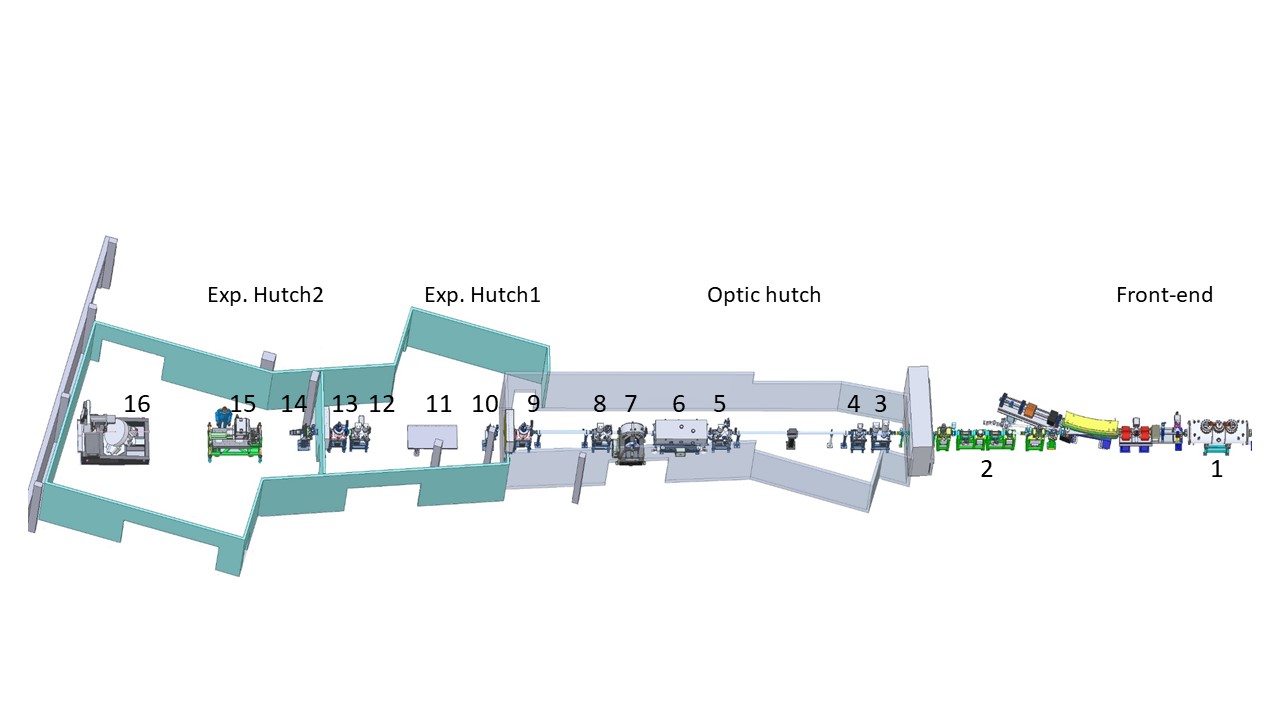The IMAGE beamline is located in the north-west straight-section of the storage ring. Two experimental stations are currently in operation or commisioning:
|
|
LAMINO-II
|
|
UFO
|


The IMAGE beamline is specifically designed for full-field hard X-ray imaging applications in materials and life sciences. The beamline prioritizes systematic in situ and operando X-ray imaging studies, along with high throughput applications (necessary for biometrics investigations in biology and paleontology) with a spatial resolution up to 1 μm. The first experimental hutch is devoted to the conduction of experiments, requiring the incorporation of specialized devices like dedicated sample environments and test chambers. The second experimental hutch houses the main experimental stations of the beamline: the tomography and the laminography stations.
The main focus of the beamline is radiographic and tomographic imaging, both in absorption mode and in phase-contrast mode, with a resolution range from approximately 40 µm (projection radiography and tomography) down to 1 µm, covering the following fields:
The beamline implements various imaging modes including:
With these modes, a variety of complementary techniques are accessible, such as:
The IMAGE beamline is located in the north-west straight-section of the storage ring. Two experimental stations are currently in operation or commisioning:
|
|
LAMINO-II
|
|
UFO
|

Characteristics
| Energy range | 8 keV - 150 keV |
| Energy resolution [ΔE/E] | white light and optional 0.01% and 3 % bandwidth |
| Source (1) | Period[mm]: 51 |
| Number of periods: 34 | |
| Magnetic pole gap [mm]: 18 | |
| On-axis field amplitude [T]: 2.9 | |
| Source size (H x V) [mm]: 1.254 x 0.065 |
Layout
|
Component |
Distance from the source |
|
High power primary slits (2) |
9 m & 10.2 m |
|
CVD diamond (3) |
13.18 m |
|
Filter unit 1 (3) |
13.387 m |
|
Intensity monitor 1 & Fluorescence screen 1 (3) |
14.726 m |
|
Filter unit 2 (4) |
14.552 m |
|
Secondary slits (5) |
20 m |
|
DMM (6) |
21.262 m |
|
DCM (7) |
23.737 m |
|
Profile monitor (8) |
24.578 m |
|
Intensity monitor 2 & Fluorescence screen 2 (8) |
24.863 m |
|
Beryllium window 1 (10) |
29.4 m |
|
Tertiary slits (12) |
34.6 m |
|
Intensity monitor 3 & Fluorescence screen 3 (12) |
34.877 m |
|
Beryllium window 2 (14) |
37.133 m |
|
sample Exp. Hutch 1 (11) |
30 m |
|
sample Exp. Hutch 2 (15) |
39 m |
|
sample Exp. Hutch 2 (16) |
44 m |
| name | function | |
|---|---|---|
| Cecilia, Angelica | Deputy Head of Department, Beamline Scientist | angelica cecilia ∂does-not-exist.kit edu |
| Hamann, Elias | Beamline Scientist, Beamline Manager | elias hamann ∂does-not-exist.kit edu |
| Simon, Rolf | Beamline Scientist | r simon ∂does-not-exist.kit edu |